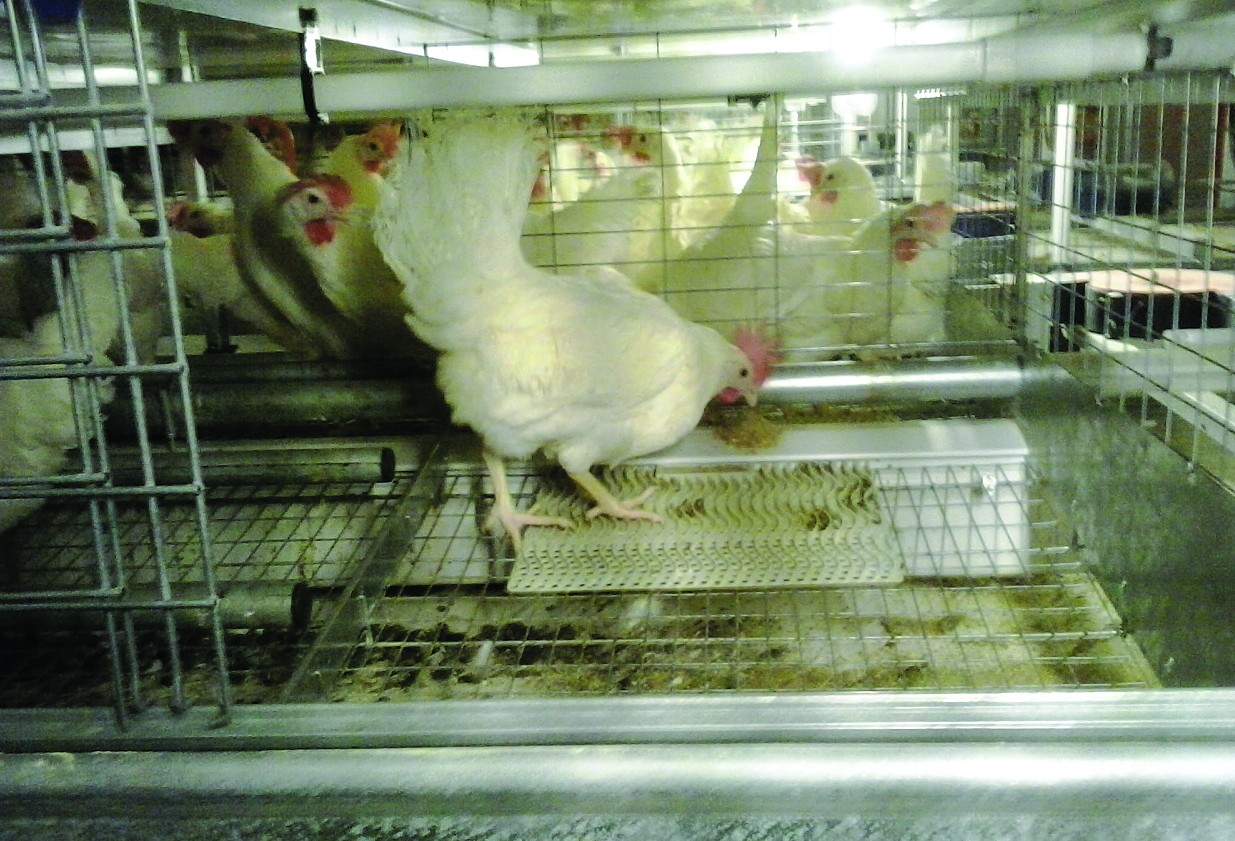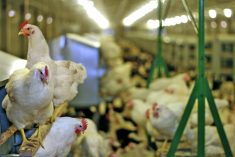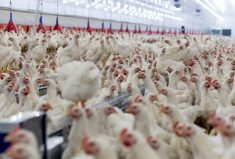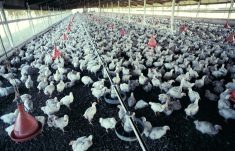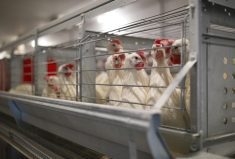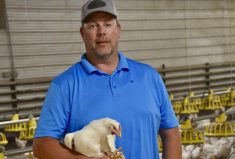Lethbridge egg farmer Levi Hofer has one eye on the present, the other on the future.
Hofer is the manager of the layer flock at the New York Hutterite Colony, which is home to new state-of-the-art facilities called “furnished housing.” It’s a new style that provides a more natural open environment, with nesting areas, scratch pads and perches.
The colony’s conventional egg barn was built in 1994 and was beginning to show its age. Unsure whether to repair or replace it with a new system, colony members spent more than four years researching their options. They began with their own producer association, the Egg Farmers of Alberta, which had developed recommended production standards, and then contacted representatives of the major chicken housing equipment in the province.
Read Also

Mosquito-borne virus could be devastating to sheep breeding operations
Cache Valley virus, a mosquito-borne disease that infects small ruminants, could be a devastating hit to small operations.
They decided to salvage the barn structure, which would reduce costs, but require more planning.
“Our ultimate goal was a system that would last 30 years,” says Hofer. “We determined there were benefits to free range, free run or enriched or furnished systems, but we decided we needed to see those systems in action to fully understand them.”
They visited several Alberta operations, but had to travel south of the border to see a furnished housing system because it is so new.
Having chosen furnished housing, the layer barns were shut down for four months, and then gutted before installing the new system.
- From the Manitoba Co-operator website: Precision ag in the poultry barn
The new system has required adjustments. For example, it has taken constant management to have birds properly use nesting, feeding and perch areas. At the start, for example, birds stayed in the nesting area because it was comfortable and that produced some fighting. This required adjustments to feeding and lighting to encourage birds to move out of the nesting area to the scratching area.
Each adjustment takes about eight days to see the results, so it takes time to get it running well, says Hofer. But the overall performance signs are positive, he said.
Hofer monitors the flock closely, even going into his barn after the lights are out with a blue flashlight to see how the chickens are doing.
“They were nice and comfortable,” he says. “Every bird was on a perch for the night just as they would be in a natural environment.
“As a manager I love it because I can communicate with my flock by adjusting the tools of producing an egg — feed, water, humidity, air quality, lighting. I can talk to those birds and they can talk back to me. For example, we use the lights to mimic sunrise. The lights come on slowly and give birds a chance to wake up. They relax better that way and that ultimately produces a better egg.”
The system is more expensive to install — perhaps as much as 20 per cent — but Hofer also knows it appeals to the consumer.
“Keeping the consumer and the distributor happy was a very big factor in choosing and building this barn,” he says. “We need to be thinking how we can communicate with the consumer. We need the consumer to walk up to the egg shelf in the grocery store and look at the options and see choices like the furnished housing system.”

